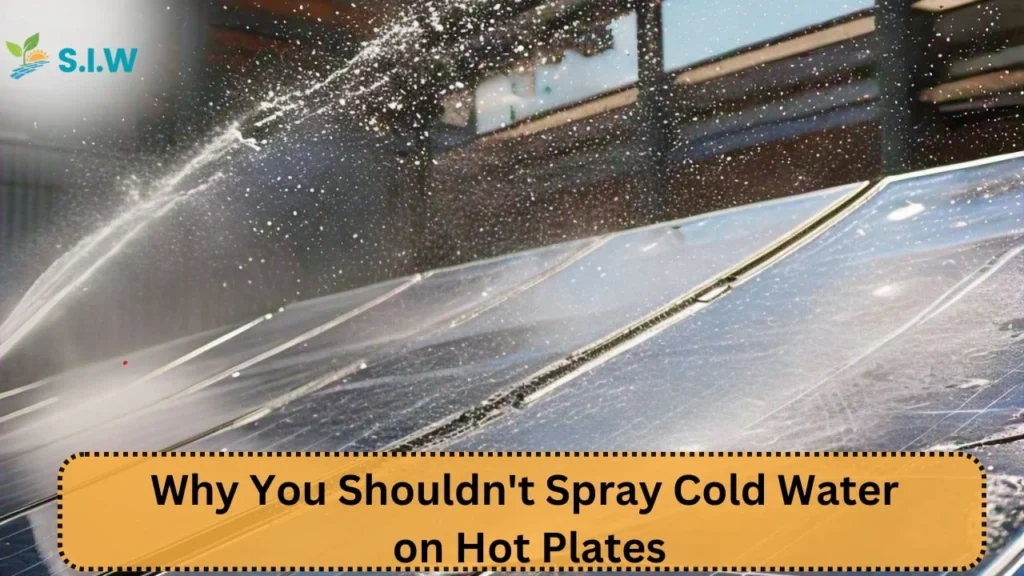Spraying cold water on hot plates might seem like a quick way to cool them down, but it can cause serious problems. When something hot suddenly comes into contact with cold water, it undergoes a rapid temperature change. This rapid shift can lead to cracking or even breaking the hot material.
How Heat and Cold Interact with Surfaces
The surface of a hot plate is usually heated to high temperatures, often used in cooking or in certain industrial processes. When cold water touches the hot surface, the temperature difference causes stress. The outer layer of the plate cools and contracts much faster than the inner part, leading to cracks.
Why Does Cracking Happen?
Cracking happens because different parts of the plate are expanding and contracting at different rates. Think of it like trying to pull on one side of a rubber band while pushing the other side—eventually, the rubber band snaps. The same happens with a plate when it is cooled too fast.
Personal Experience with Cracking Plates
I once made the mistake of spraying water on a hot stove-top plate after cooking. Within seconds, I heard a loud pop and saw a crack running across the surface. It was a lesson in how sensitive materials can be to rapid changes in temperature.
The Science Behind It
Materials, especially those used for hot plates, are designed to handle heat, but only up to a point. Sudden cooling can shock the material, making it brittle. This is particularly true for ceramic, glass, and even metal plates. Thermal shock is the technical term for this phenomenon.
In solar water purification systems, where plates and surfaces are exposed to the sun’s heat, spraying cold water directly on these heated surfaces can reduce their effectiveness or cause damage. Instead, letting the material cool naturally is a safer approach.
Safety First: Avoiding Damage
The safest way to handle hot plates is to let them cool down on their own. If you’re in a rush, place the plate in a cool—not cold—environment to lower its temperature gradually. Avoid quick fixes like spraying cold water, which can do more harm than good.
Impact on Water Heaters
Similarly, electric hot water heaters should not be exposed to sudden temperature changes. Rapid cooling of their surfaces, particularly around the heating elements, can cause cracks or damage that affect their performance. Just like with hot plates, gradual cooling is always the best option.
Better Alternatives for Cooling Hot Plates
Instead of spraying cold water, here are some safe alternatives:
- Let the plate rest: Give it time to cool naturally in a well-ventilated area.
- Use warm water: If you must cool it down, use lukewarm water instead of cold water.
- Move to a cooler spot: Place the plate in a shaded or cooler area where the temperature drops slowly.
Key Takeaways
Avoid spraying cold water on hot plates because the sudden temperature change can cause cracking. Use safer methods like gradual cooling to prevent damage. Whether you’re dealing with cooking equipment or solar water purification systems, the principles of thermal shock apply universally.
FAQs
- Why do hot plates crack when exposed to cold water?
Hot plates crack because the rapid temperature change causes the material to expand and contract at different rates. - Can metal plates crack when sprayed with cold water?
Yes, metal plates can also crack if the temperature change is too extreme, though they are usually more resistant than ceramic or glass. - How can I cool down a hot plate safely?
Let it cool naturally or use warm water instead of cold water to avoid thermal shock. - Can I spray cold water on an electric hot water heater?
No, sudden cooling can damage the heater’s elements. Always let it cool down gradually. - Are solar water purification systems affected by sudden cooling?
Yes, sudden cooling can reduce the effectiveness or damage the surfaces in solar water purification systems.








